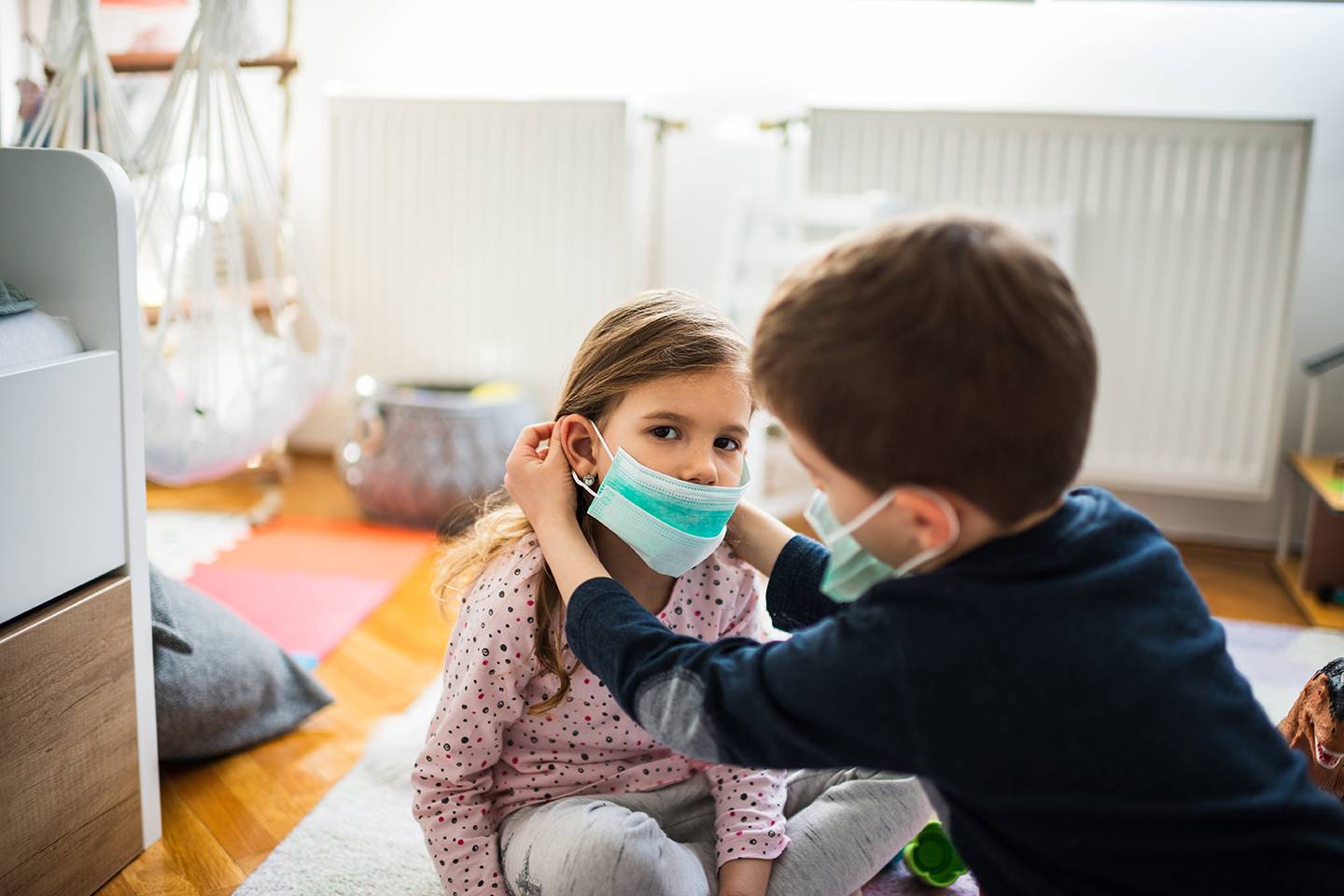- Lindsey T.
- Monday, March 28, 2022
Many of the guidelines I hear for quarantining center around total isolation, but this definition is only practical for single-person households. What about families?
COVID-19 levels have been slowly declining since the holidays, but it’s not surprising that people are still testing positive for it and needing to quarantine. But this process can be tricky for families. How can you quarantine if you have a toddler that needs constant attention? Or what should you do if you have high-risk family members in your household? Here are some of the most common questions and answers about quarantining with families.

How long should I quarantine?
The CDC changed its answer to this question in December 2021; it is no longer the 2 weeks that we all were told at the beginning of this pandemic. Instead, the CDC recommends quarantining only 5 days if you are asymptomatic or your symptoms are improving, and then wearing a mask 5 additional days while in public. If your symptoms aren’t improving, continue to stay at home until they do, and then wear a mask for 5 days while in public.
How can I quarantine when I share a home with my family?
The trick is to isolate as much as possible, wear a mask, and follow the CDC’s cleaning instructions. This applies to all members of the household—not just the person who tested positive—and is essential if a member of your family is at high risk from the virus. You should also:
- Stay in separate rooms
- Have the person who tested positive use a separate bathroom
- Practice proper hygiene and handwashing
- Not share household items like silverware or towels
- Limit contact with pets and other family members as much as possible
Many of these tips involve isolating the positive person from other family members, but if your entire family has tested positive, there is no need for this. Regardless, you should try to monitor your family’s symptoms. If any new symptoms appear or if someone’s symptoms worsen, contact your healthcare provider for instructions.
What if my child tests positive, but I test negative?
This is difficult—especially if your child isn’t old enough to care for themselves. When caring for your child, follow the CDC cleaning guidelines and be sure to wear a mask. If you have multiple children and have a partner in the household, form a ‘bubble’ with one child while your partner cares for the other(s). These bubbles should remain as separate as possible to prevent transmission. Try not to share spaces, including bathrooms and bedrooms, and encourage ventilation as much as possible by opening windows and doors. Another option is that if a household member(s) test negative, they might stay with friends or another family member.
What do I do if I get sick but I’m the primary caregiver for a disabled family member?
Prepare for this possibility as much as possible. Create a contact list of family, friends, neighbors and local service agencies that can provide support in case you or your direct support provider becomes ill or unavailable. Also try to have an extra 30 days of medications, medical equipment, or supplies on hand. Many health plans allow a 90-day refill on prescription medications, so ask your healthcare provider if this is possible. Other household items and food can be gathered beforehand or ordered on Amazon or other websites during your quarantine.
How do I care for my family’s mental health during this time?
The fear of catching COVID-19 is something that we’ve all experienced, and if someone in your household tests positive, the fear of it spreading to other members is very real. It’s important to recognize this stress in your family and try to ease it as much as possible. You could remind them that their loved one’s symptoms aren’t severe and will likely improve, rather than worsen. It might also be wise to prepare for the possibility of quarantine before it happens—similar to preparing your family for a natural disaster. Opening a conversation about getting COVID-19 and allowing family members to take concrete actions to prepare for it (like figuring out living arrangements or shopping for supplies) will help alleviate some of that stress. For more tips about how to approach COVID-19 with your family from a mental health standpoint, click here.
Overall, the keys to quarantining with families is to make sure all common surfaces are disinfected regularly, isolating sick family members from healthy ones as much as possible, and preparing for the possibility of needing to quarantine. As vaccination rates continue to rise, hopefully we soon won’t have to quarantine as long or as often, but until that day comes, follow these tips to safely quarantine with your family.
With the Coronavirus (COVID-19) currently impacting the U.S., we've compiled a list of resources and information to help you and your family stay informed. For additional COVID-19 resources and information, click here.
For general COVID information via phone, call:
- DHEC Care Line (General COVID Information) 855-472-3432
- CDC Info (General COVID Information) 800-232-4636
- Richland County Health Department 855-472-3432


